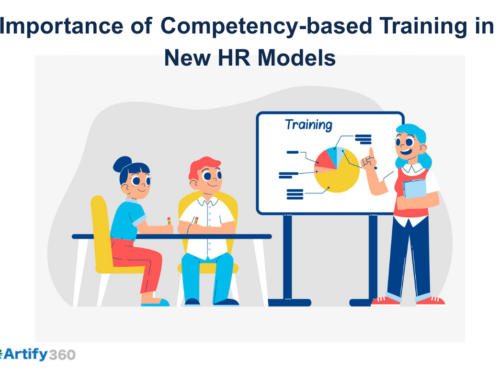Effective payroll management is a cornerstone of business success, ensuring that employees are compensated accurately and timely. However, payroll isn’t just about paying employees; it holds the potential to offer valuable insights that can significantly impact an organization’s financial efficiency.
Payroll analytics is an innovative approach that harnesses payroll data to make informed financial decisions. In this article, we’ll delve into payroll analytics in Qatar HR software, exploring its capabilities and how it can help businesses optimize payroll expenses for more significant financial efficiency.
Understanding payroll analytics
Payroll analytics involves the systematic analysis of payroll data to derive meaningful insights. It’s not just about processing salaries; it’s about understanding the numbers behind paychecks and utilizing this data to enhance decision-making. Payroll analytics moves beyond routine payroll processing, transforming raw data into actionable information that can drive organizational success.
Key payroll metrics for analytics
An array of payroll metrics holds the key to unlocking valuable insights. These metrics unveil a comprehensive picture of payroll expenditures, from tracking total compensation costs to understanding overtime expenses. They shed light on trends, patterns, and areas where financial efficiency can be improved.
Role of payroll software in analytics
Qatar payroll software is the bridge that connects the numbers on a payroll sheet to the realm of analytics. This software streamlines payroll processes, ensuring accurate data collection. It also serves as a treasure trove of data, housing valuable information about salaries, benefits, deductions, and more. By leveraging this software, businesses gain access to a wealth of data that can be transformed into insights for financial optimization.
Real-time expense tracking
Real-time expense tracking brings agility to financial management. With payroll analytics, organizations can monitor expenses as they occur, ensuring that budgets are on track and resources are allocated efficiently. By providing up-to-date expense data, payroll tools empower businesses to make timely decisions.
Identifying cost drivers
One of the central roles of payroll analytics is identifying cost drivers. What are the factors that contribute significantly to payroll expenses? Is it overtime? Benefits? By isolating these cost drivers, organizations can pinpoint areas where expenditures are high and devise strategies for cost optimization.
Analyzing overtime and benefits costs
Overtime and benefits costs often form substantial portions of payroll expenses. Payroll analytics in Qatar’s top HR software delves deep into these components, revealing the impact of overtime hours and benefits packages on the bottom line. This analysis enables businesses to manage and control these costs more effectively.
Comparing payroll expenses over time
A historical perspective is invaluable in understanding payroll trends. Payroll analytics generates historical data that can be compared over different periods. This comparison allows organizations to identify seasonal trends, anomalies, and areas of improvement.
Budget forecasting and planning
Budget forecasting and planning are essential components of financial management. Payroll analytics aids in this process by providing accurate data for budget decisions. This data-driven approach ensures that financial decisions are rooted in reality, increasing the likelihood of successful planning.
Labor distribution analysis
Analyzing labor distribution helps optimize costs further. This analysis breaks down labor expenses across different departments or teams, providing insights into areas where labor allocation can be improved. Payroll analytics clearly shows where resources are being utilized and where adjustments can be made.
Departmental and location analysis
The departmental and location-wise analysis takes cost optimization to a granular level. Different departments and locations might exhibit distinct payroll trends. Payroll software in Qatar offers segmented expense data, enabling organizations to identify variations and tailor strategies accordingly.
Employee turnover impact
Employee turnover carries financial implications. From recruitment costs to training expenses for new hires, turnover-related costs can be significant. Payroll analytics helps organizations understand the actual cost of turnover and devise strategies to enhance employee retention.
Compliance and tax insights
Compliance with tax regulations is a critical aspect of payroll management. Payroll analytics in Qatar’s top HR software ensures that payroll data aligns with tax regulations, minimizing the risk of compliance-related issues. Accurate data translates to reduced compliance risks.
Customizable analytics dashboards
Customization empowers organizations to tailor analytics dashboards to their specific needs. Qatar payroll software offers customizable dashboards that allow businesses to choose the metrics they want to focus on. This flexibility ensures that insights align with business goals.
Data security and confidentiality
Data security is paramount in payroll analytics. Sensitive financial data requires protection. The payroll system employs robust security measures to safeguard confidential information and ensure compliance with data protection regulations.
Final thoughts
In a world where financial efficiency is paramount, payroll analytics in Artify360 HR software emerges as a guiding light. By harnessing the power of payroll data, organizations can optimize expenses, enhance decision-making, and drive overall efficiency. From identifying cost drivers to forecasting budgets, payroll analytics transforms raw data into actionable insights.
As technology continues to evolve, the potential of payroll analytics to revolutionize financial management is boundless. By embracing payroll analytics in Artify360 HR software, businesses pave the way for smarter financial decisions, a leaner bottom line, and a future where financial efficiency reigns supreme.






